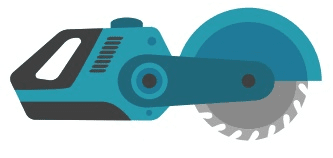15 Of The Most Popular Pinterest Boards Of All Time About Cross Cut Mitre Saw

The Complete Guide to Cross Cut Mitre Saws
Worldwide of woodworking and building and construction, a cross cut mitre saw is a necessary tool that adds precision and flexibility to any project. Developed to make clean, accurate cuts at various angles, this power tool is a preferred amongst both amateur enthusiasts and professional carpenters alike. With a broad variety of features, styles, and requirements, comprehending the complexities of cross cut mitre saws can considerably boost your woodworking abilities.
What is a Cross Cut Mitre Saw?
A cross cut mitre saw, typically referred to as a mitre saw, is a fixed power tool that enables users to make exact cross cuts and mitre cuts in wood and other products. The saw features a circular blade that is installed on a pivoting arm. The arm can be decreased to slice through the product at an angle, offering a flexible cutting capability.
Secret Features of a Cross Cut Mitre Saw
- Blade Size: Common sizes include 10-inch and 12-inch blades. Double Bevel Miter Saw of the blade impacts the depth and width of cuts.
- Mitre Angles: Most mitre saws have predetermined angles varying from 0 ° to 45 °, permitting various mitre cuts.
- Bevel Function: Some saws consist of a bevel function to make compound cuts. This function can tilt the blade side-to-side.
- Laser Guide: Laser markers help offer accuracy in cutting by predicting a line that shows where the cut will occur.
- Dust Collection: An efficient dust collection system helps keep the work area tidy and enhances visibility.
Various Types of Mitre Saws
- Fundamental Mitre Saw: Ideal for simple crosscuts at specific angles.
- Compound Mitre Saw: Capable of making both mitre and bevel cuts, using more flexibility.
- Sliding Compound Mitre Saw: A more innovative option that includes a sliding arm, enabling larger cuts.
| Type | Functionality | Best For |
|---|---|---|
| Standard Mitre Saw | Easy crosscuts and mitre cuts | Beginners and simple tasks |
| Compound Mitre Saw | Mitre and bevel cuts | More innovative jobs |
| Sliding Compound Mitre Saw | Wider cuts due to the sliding feature, mitre and bevel cuts | Experts |
Advantages of Using a Cross Cut Mitre Saw
- Precision: Mitre saws provide precise cuts that can boost the quality of any woodworking job.
- Versatility: With the capability to make mitre and bevel cuts, the variety of applications is substantial-- from photo frames to intricate furnishings designs.
- Speed: Mitre saws permit fast setups and fast cutting, which is especially beneficial in professional settings.
- Relieve of Use: Most designs are easy to use, making them appropriate for both newbies and knowledgeable craftsmen.
How to Choose the Right Cross Cut Mitre Saw
When picking a mitre saw, numerous elements must be considered to guarantee it fulfills the user's requirements:
1. Blade Size
- Think about the size of the products you'll be dealing with. For bigger projects, a 12-inch blade might be better.
2. Horse power
- Higher horse power typically suggests greater power and the capability to cut through denser products.
3. Dust Management
- Think about models with effective dust collection systems for cleaner work environments.
4. User Reviews
- Research client reviews to find out about the performance and dependability of numerous brands and designs.
5. Mobility
- Decide if you need a lightweight, portable model or a much heavier, more powerful fixed unit.
Best Practices for Using a Cross Cut Mitre Saw
Using a mitre saw securely and effectively involves adhering to numerous best practices:
- Always wear personal protective devices (PPE) such as shatterproof glass and ear protection.
- Secure the material before cutting to avoid motion that can result in mistakes or injury.
- Double-check measurements and settings before making cuts.
- Keep the workspace tidy to lessen dangers and enhance exposure.
- Find out and practice safe cutting strategies to decrease the risk of accidents.
FAQs about Cross Cut Mitre Saws
Q1: What materials can I cut with a mitre saw?A: Mitre saws are
designed primarily for wood, however they can also cut through plastics and some soft metals. Constantly examine the specifications of your saw to verify compatibility with different materials. Q2: How frequently ought to I change the blade on my
mitre saw?A: The frequency of blade changes depends upon usage. If you see decreased performance or irregular cuts, it's time to change the blade. On average, a quality blade will last for several months with routine use. Q3: Can I utilize my mitre saw for rip cuts?A: No, mitre saws are not developed for rip
cuts. Use a table saw for making rip
cuts along the grain of the lumber. Q4: How do I keep my cross cut mitre saw?A: Regularly tidy your saw, check for loose screws, and lubemoving parts based on the manufacturer's directions
. This will guarantee optimal performance and durability. Q5: Is a sliding compound mitre saw worth the investment?A: If your tasks require broader cuts and higher adaptability, a sliding compound model is
worth the financial investment. They supply boosted abilities, however if you just need fundamental cuts, a basic mitre saw will suffice. A cross cut mitre saw is an invaluable tool for woodworking and building projects, providing precision, performance, and flexibility. Understanding the different features, types, and best
practices related to these saws will make it possible for users to maximize their capabilities and produce high-quality results. By thinking about the ideal requirements and maintaining appropriate usage practices, anyone can master this power tool and raise their workmanship to the next level.

